A cosmic journey: Joey Shapiro Key selected for the LISA Science Team
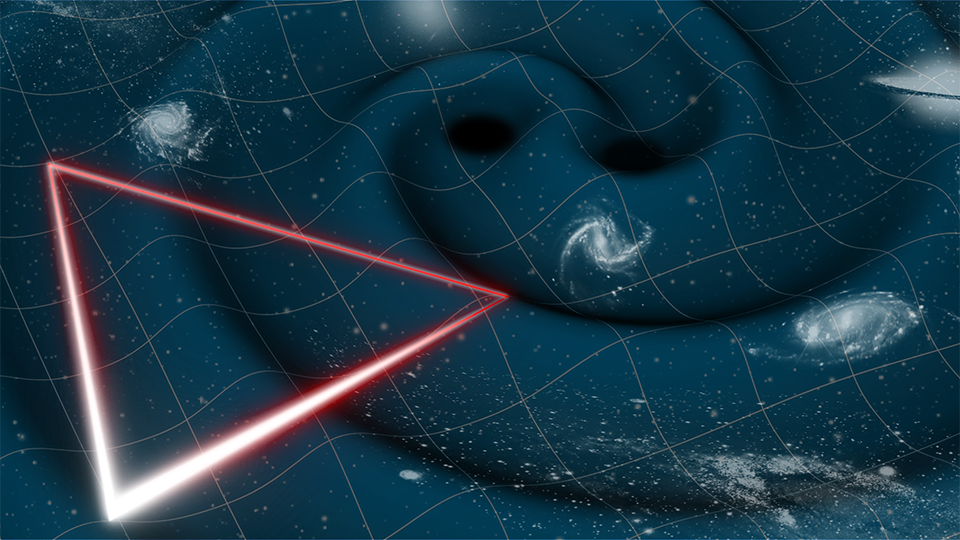
In astrophysics, few projects are as groundbreaking as the exploration of gravitational waves. First theorized in 1916 by Albert Einstein’s general theory of relativity, gravitational waves are ‘ripples’ in space-time caused by massive astronomical events. This phenomenon remained unobserved for nearly 100 years until September 2015 when the Laser Interferometer Gravitational-wave Observatory (LIGO), a ground-based gravitational wave observatory, detected gravitational waves from the merger of two stellar-mass black holes. According to the National Aeronautics and Space Administration (NASA), a stellar mass black hole results from the collapse of an extremely massive star typically five to ten times more massive than the Sun.
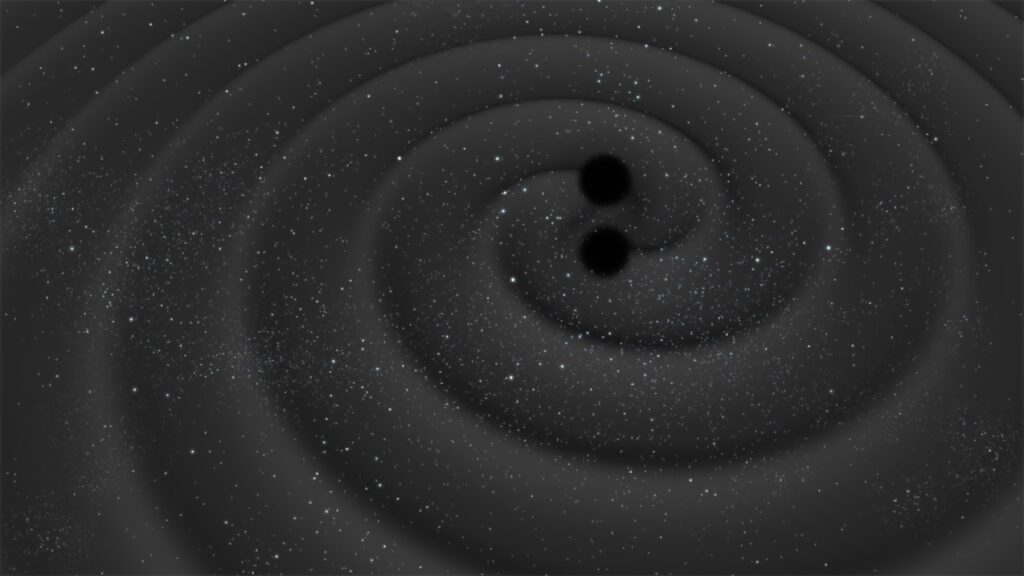
Building on gravitational wave research from the last decade, the European Space Agency (ESA) teamed up with NASA for the upcoming Laser Interferometer Space Antenna (LISA) mission. NASA’s Astrophysics Division selected six U.S. scientists from all over the nation to serve on the joint ESA-NASA LISA Science Team; they will join a team of eleven European scientists along with two interdisciplinary scientists and a representative from the LISA Consortium.
Among the six U.S. scientists chosen is UW Bothell’s Dr. Joey Shapiro Key, associate professor in physics.
We’re going to be working hard to ensure the success of the mission. But that is something that I want to contribute my time to.
A multi-generational legacy in astronomy
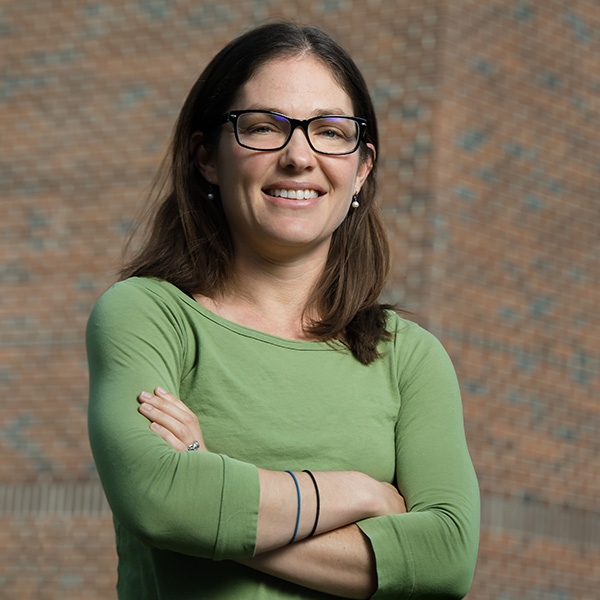
During her time in graduate school at Montana State University, Key intended to focus on cosmology but was still unsure of her path. She began working on cosmology research with Dr. Neil Cornish but changed to his research group’s focus on gravitational waves.
“I was an astrophysics major in college and I worked on cosmology in undergrad,” Key said. “But in grad school, I started working on gravitational wave astronomy because that’s what my adviser was working on.”
Key’s research has contributed to LIGO, LISA and NANOGrav, the North American Nanohertz Observatory for Gravitational Waves.
“These big missions that we do, like LIGO and like LISA, they’re multi-generational,” Key said. “I mean, really human generations, scientific generations and academic generations.”
Key’s adviser, Cornish, had been working on these missions long before he taught her, and now she is teaching students who will become leaders in this field in 10 to 15 years. Cornish is also one of the six scientists selected to work on the LISA mission, so after many decades of working and researching, Key and Cornish will reunite for the project as peers and colleagues.
“I trained with him and learned from him,” Key said. “It’s fun and exciting to continue collaborating with him in this new role.”
Nurturing curiosity and discovery in the classroom
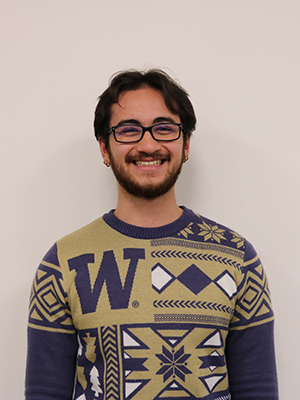
As an associate professor at UW Bothell, Key incorporates current research and discoveries in her teaching. Because it’s happening in real-time, gravitational wave research makes its way into her physics and cosmology courses, classical mechanics and astronomy 101.
“It’s natural and timely to include all of this in classes,” Key said.
UW Bothell provides programs and opportunities for students to get involved in cutting-edge gravitational wave research. Last year, Jayron Yucker, a senior pursuing his Bachelor of Science in Physics, received an email from Key offering her mentorship. Yucker became involved in Key’s gravitational wave research group and was encouraged to apply for the Washington NASA Space Grant Consortium Summer Undergraduate Research Program (SURP). In this program, he worked with simulated LISA data – particularly looking at extreme mass ratio inspirals (EMRI), small black holes orbiting supermassive black holes.
Astronomy is sort of a gateway science. People can get excited even if it doesn’t connect to the details of their everyday life.
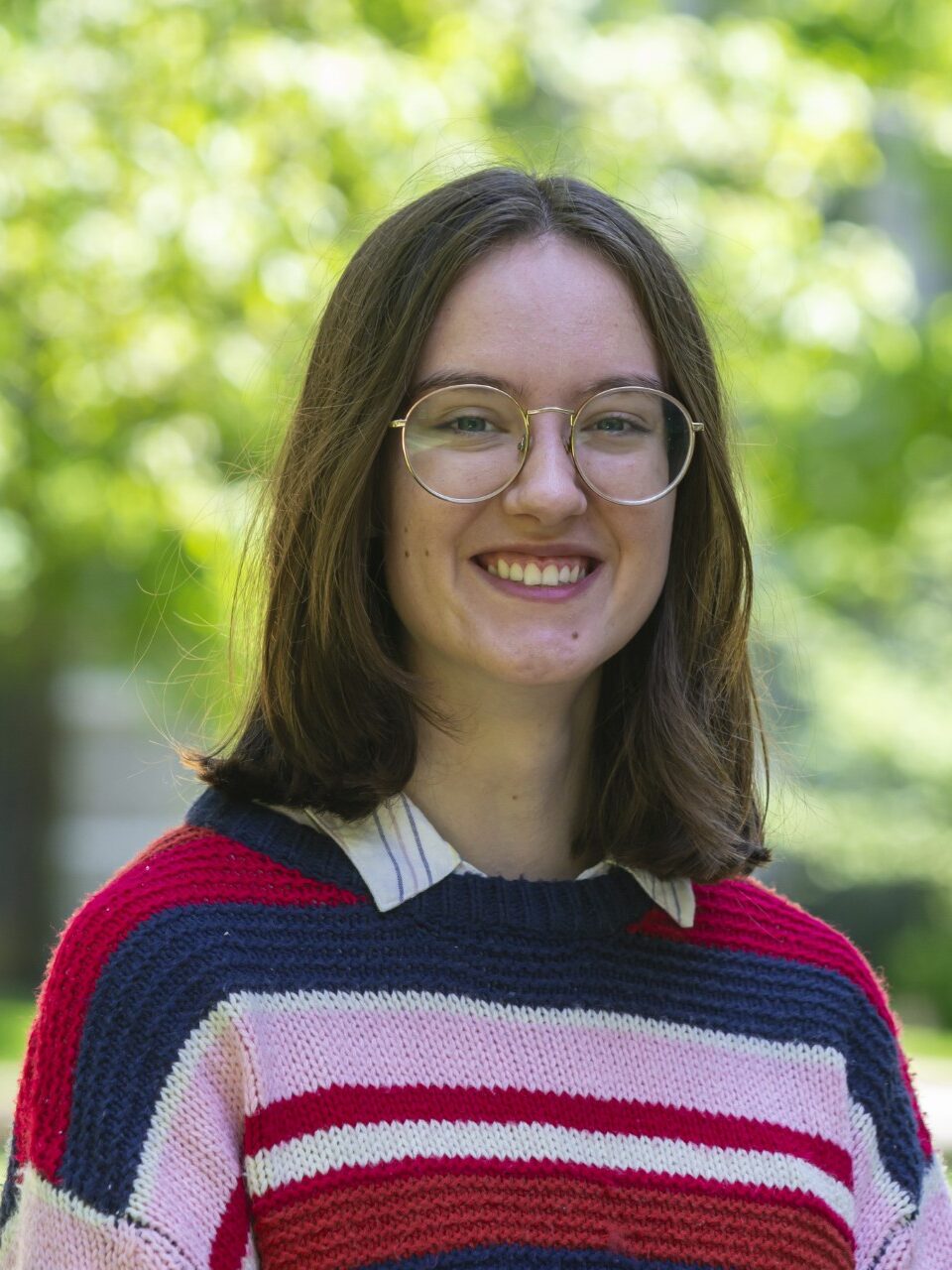
One of the more well-known opportunities at UW Bothell are the Research Experiences for Undergraduates (REU) programs, which provide students with immersive research experiences over the summer. August Muller, a visiting researcher at UW Bothell, was part of the 2021 Physics REU cohort working with Key on LISA EMRI search techniques. Muller came to UW Bothell because it was one of the only research programs she applied to that would give her hands-on research experience. Even after completing the REU, Muller kept updated on the gravitational wave project and it later became the focus of her bachelor’s thesis.
“I sort of realized in that moment that I was having more fun in the research that I was doing with Joey,” Muller said. “Trying out different fields and really using that as an opportunity to figure out what one likes and doesn’t like as an academic and as a scientist, I think was very useful to me.”
Now, Muller’s beginning a 10-month Fulbright fellowship at the Max Planck Institute for Gravitational Physics where she will be continuing her gravitational wave research.
“That’s how the undergraduate research goes,” Key said. “They’re long-term projects that students come on and learn about the project and contribute and then sort of pass it along.”
Due to the generational longevity of this field, K-12 outreach efforts are crucial for engaging high school students in gravitational wave research. Initiatives like the LISA Ambassadors program aim to make complex scientific concepts accessible and exciting for younger audiences.
Through outreach and research opportunities, educators like Key are cultivating the next generation of scholars in this relatively young field.
“Astronomy is sort of a gateway science,” Key said. “People can get excited even if it doesn’t connect to the details of their everyday life.”
LISA’s unique design: A space-based revolution
Set to launch in 2035, LISA’s design consists of three spacecraft arranged in an equilateral triangle, with laser beams extending approximately 2.5 million miles on each side measuring the distance between them. When an astronomical event occurs, the gravitational waves will cause the spacecrafts to shift slightly. The lasers will measure that distance and send the signal to scientists down on Earth to analyze – which is the role Key is assisting with.
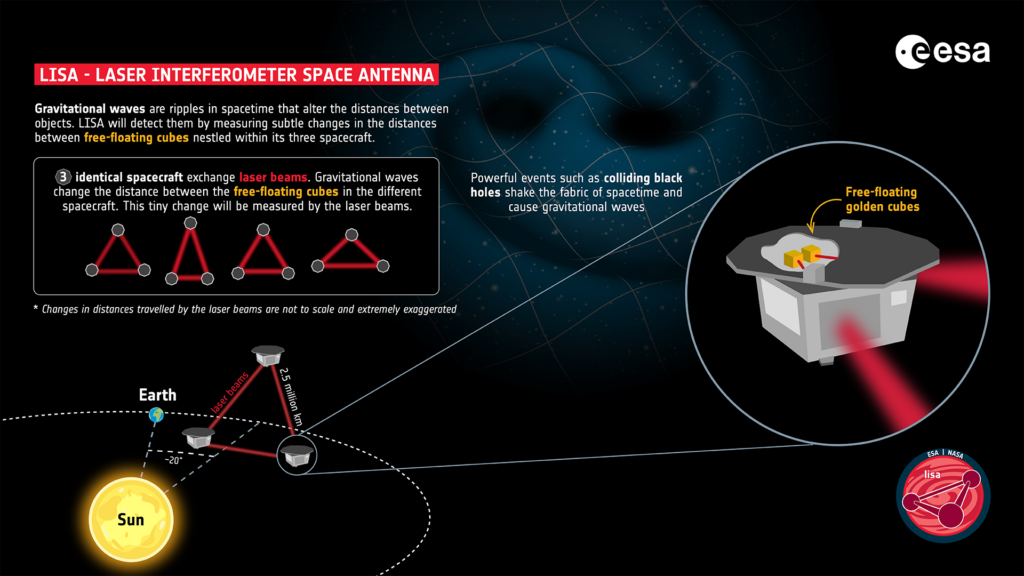
Designing this mission to be in space is more complicated according to Key, but it holds a lot of advantages. Because it will operate in space, LISA will span larger than the Earth and be incredibly sensitive to gravitational waves — resulting in LISA collecting a lot of data for scientists. One of the key objectives of the mission is to learn more about supermassive black holes. Located at the center of almost every large galaxy, a supermassive black hole has a mass of hundreds of thousands to billions of times the Sun’s mass, according to NASA. But scientists know very little about them.
“LISA is our only prospect for observing those kinds of systems,” Key said.
This ability to capture the subtle shifts caused by gravitational waves will revolutionize our understanding of the fundamental nature of gravity, black holes and galaxies.
Key’s commitment to advancing gravitational wave research
Due to its incredible sensitivity, LISA will collect a lot of overlapping signals which will need to be analyzed so they aren’t contaminating each other. Key’s role in the mission is to analyze simulated LISA data since the mission has not yet launched.
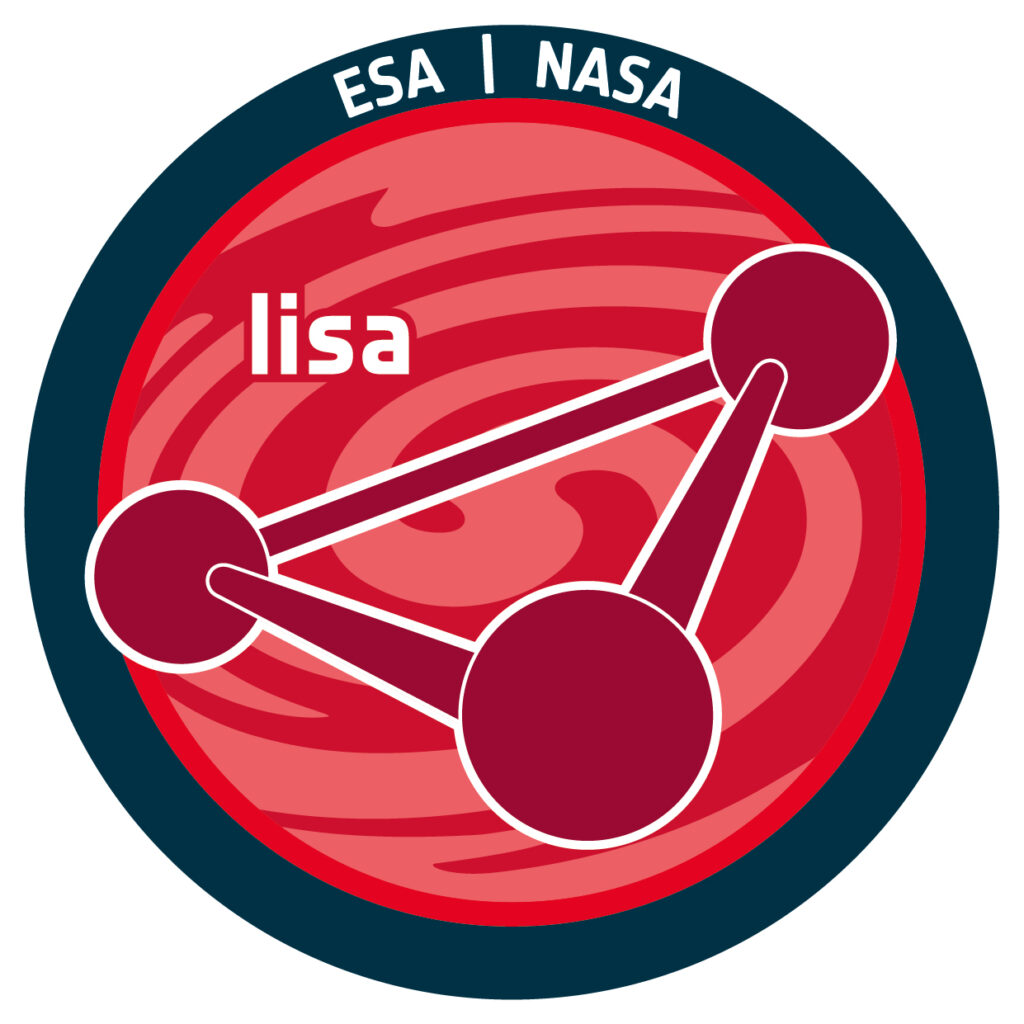
“It makes it an interesting data analysis problem,” Key said. “Right now, I use simulated LISA data to demonstrate our analysis techniques – that’s what I do with students here at UW Bothell.”
Key’s role in the mission is essential because her work enables LISA’s gravitational wave data to identify the properties of different astrophysical sources. Key’s term on the LISA science team will last three years; collaborating with the other scientists selected and learning more about the data that LISA will collect on its 4.5-year mission orbiting around the Sun.
“It’s a great honor to be selected,” Key said. “Our field is full of smart, talented, motivated scientists working to answer these kinds of questions, this new kind of astronomy and this new way to observe the cosmos and black holes and other kinds of sources. We’re going to be working hard to ensure the success of the mission. But that is something that I want to contribute my time to.”
